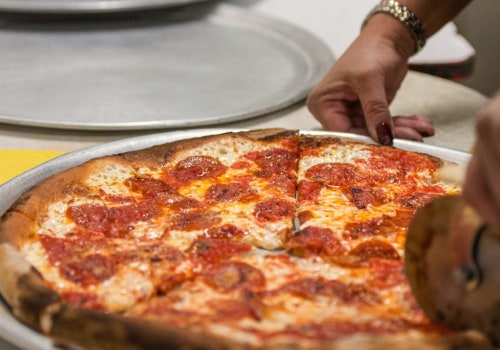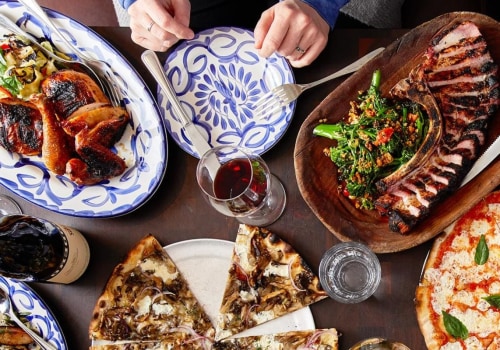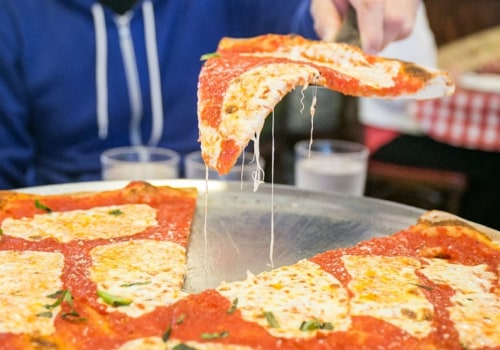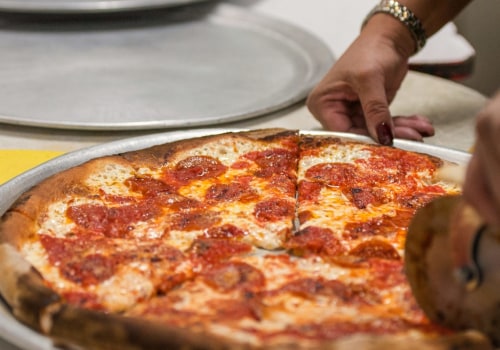Italian and Jewish food, so authentic you'd think it's on the edge of the Mediterranean. Nothing welcomes New York like a slice of fine-crust, handmade pizza. Or a plate of spicy buffalo wings. Or a delicious rye pastrami.
Now that I think about it, New York has quite a few claims of gastronomic fame. New York-style pizza, a culinary contribution of Italian immigrants, is a variation of Neapolitan-style pizza. It is famous for its fine hand-mixed dough, topped with a thin layer of tomato sauce and mozzarella cheese. Because it is thin and flexible, New York pizza is often sold in large slices that can be easily folded.
Grandma's pizza dates back to Italian-American grandmothers who lived on Long Island in the 1970s. Since it was created by home cooks, Grandma pizza is traditionally made without a pizza oven. Cut into square pieces for serving. There are several unverified origin stories of buffalo wings, but most go back to the Bellissimo family at Anchor Bar in Buffalo, New York.
Traditional buffalo wings are blended into a buttery cayenne pepper-based sauce that ranges in flavor from mild to spicy. They are often served with celery and blue cheese or ranch dressing, as these additions provide a refreshing effect. New York-style cheesecake usually has a Graham cracker crust and is baked in a detachable pan. Freshly baked pretzels came to New Amsterdam (a settlement on the southern tip of the island of Manhattan) through Dutch immigrants in the early 19th century.
The savoury snack has been a staple of street food ever since. Lobster rolls, lobster meat served on a grilled hot dog-style bun, are a Northeastern staple. Lobster fishing is common on Long Island, so it makes perfect sense that delicious sandwiches are frequently found on Long Island restaurant menus. Manhattan clam chowder is tomato-based and contains no milk or cream, which sets it apart from its white counterpart in New England.
In addition, unlike other versions, Manhattan clam chowder generally contains vegetables and starts with a miepoix (an aromatic cooking base of carrots, celery and onions). Bagels and smoked salmon are the best dish to melt. Both had a long culinary history before joining together in the new world. Bagels arrived in the Lower Side East with the immigration of Polish Jews.
Smoked salmon is a little more complicated, a mix of the Scandinavian tradition of saltwater salmon and Native American smoking and drying techniques. The sandwich also includes some American cream cheese and sometimes also Italian onions and capers. The combination can be found at every bagel store in town, but Russ & Daughters is a piece of living history. Opened in 1914, the iconic “appetizing” store specializes in the Jewish tradition of serving foods combined with bagels.
Unlike delicatessen stores that serve meat, the store focuses on dairy products (cream cheese) and expertly cured fish, such as caviar, sturgeon and salmon. Trash is for eating in Rochester, where residents go crazy over the strange trash can. The story goes that a long time ago, a university student asked restaurateur Nick Tahou for a meal with “all the garbage”. Tahou agreed and created a combined dish with two hamburgers and a choice of two side dishes: homemade French fries, pasta salad and beans dipped in tomato sauce and hot sauce.
Everything is mixed before eating, with rolls or white bread as a side dish. Now, the name Garbage Plate is a registered trademark, but similarly named versions are served all over the city with a variety of proteins, such as sausage and eggs. Nick Tahou Hots is still the ideal place to learn about Rochester's strange history and enjoy an ideal meal late into the night. Cheesecake was part of the global culinary canon long before the imposing metropolis of New York City claimed that soft cheesecakes date back to ancient Greece.
However, an American created the breakthrough that would become New York Cheesecake. In an attempt to reproduce Neufchatel's French cheese, a man named William Lawrence of Chester, New York, stumbled upon an even richer and creamier result without ripening. That creamy cheese became the basis of the simple New York cheesecake (along with cream, eggs and sugar), which grew in popularity in the early 20th century. The most venerable version came out of Junior's kitchen in downtown Brooklyn in 1950, and resulted in a dense, smooth, almost spicy dessert that still attracts fans from all over the region and around the world.
Hot dogs are as common in New York as yellow taxis. Traditionally made with ground pork, veal, or both, these sausage-type sausages are seasoned with garlic, mustard and nutmeg before being packaged, cured, smoked and cooked. Travel to Brooklyn to visit Original Nathan's Famous Frankfurters, opened in 1915 by German-born Charles Feltman, who conceived the hot dog while pushing a cake cart along the Coney Island waterfront. Or stop by the street carts on the corners of the city for sausages with garlic, granulated mustard and spicy sauerkraut.
Try making your own. Cumberland hot dogs with charred tomato sauce or sweet chili peppers Derived from the Yiddish word for dumplings, a knish is a thick, dense dough that is baked, roasted or fried. Potato dishes with spicy brown mustard are a New York classic, although mushrooms, spinach and other vegetables usually reach their pasty center. Another Eastern European gift from the 1900s, knishes are commonly sold in restaurants, Jewish delicatessen stores, butchers and street vendors from Brooklyn to the Bronx.
Wash your pizza with a ball of cold, colorful sparkles. Spumoni, a cross between Italian ice cream and ice cream, originated in Naples as the ancestor of Napoleon's ice cream. Spumoni, like its descendant, is a trio of flavors, usually chocolate, pistachio and cherry, although vanilla, cannoli or cremelata usually appear instead of cherries. This recipe inspired by sparkling wines The 10 best gastronomic things to try in RomeThe best foods to try in ParisThe 10 best gastronomic things to try in TokyoThe best foods to try in Lisbon.
Founded in 1938 in Sheepshead Bay, when the surrounding area was still farmland, Brennan & Carr offers New York's answer to the legendary Los Angeles French sauce sandwich. It probably doesn't surprise you to learn that Waldorf salad is named after the Waldorf-Astoria hotel in New York. It was brought to New York by Romanian Jews in the late 19th century, during a period of mass immigration from Eastern Europe. For more information on New York's must-see establishments, check out Eater 38, critic Robert Sietsema's list of budget dining destinations, and guides to burgers, pizzerias, steaks and desserts.
Some people believe that bark gets its characteristic texture and flavor from minerals found in tap water in New York City. The origins of the dish date back to the Uighurs and it became popular in Henan before it was established here, in a restaurant run by Fujian owners, illustrating the tortuous route that many iconic dishes usually follow before arriving in New York. New York may have better bagels, but there's no better experience with bagels and smoked salmon than Russ & Daughters. Many meat lovers in the New York area believe Peter Luger's porterhouse is the best steak ever served, despite brutal criticism from the Times.
But since then, the smoked brisket sandwich, the centerpiece, has become one of New York's most iconic dishes, along with pastrami and corned beef. Pierogi was among New York's most iconic foods long before the Russian war against Ukraine led diners to stand in line at Veselka. Come out, Kris & Charlie's is typical of the old Italian delicatessen stores in the city, and here giant cold-cut sandwiches called heroes are prepared here, perhaps because of their heroic size. The Japanese staple of wheat noodles in a hot meat or fish-based broth is usually seasoned with soy sauce, miso, or garlic oil and enhanced with toppings such as sliced pork belly, dried seaweed, bamboo shoots, and soft-boiled egg.
. .




Leave a Comment